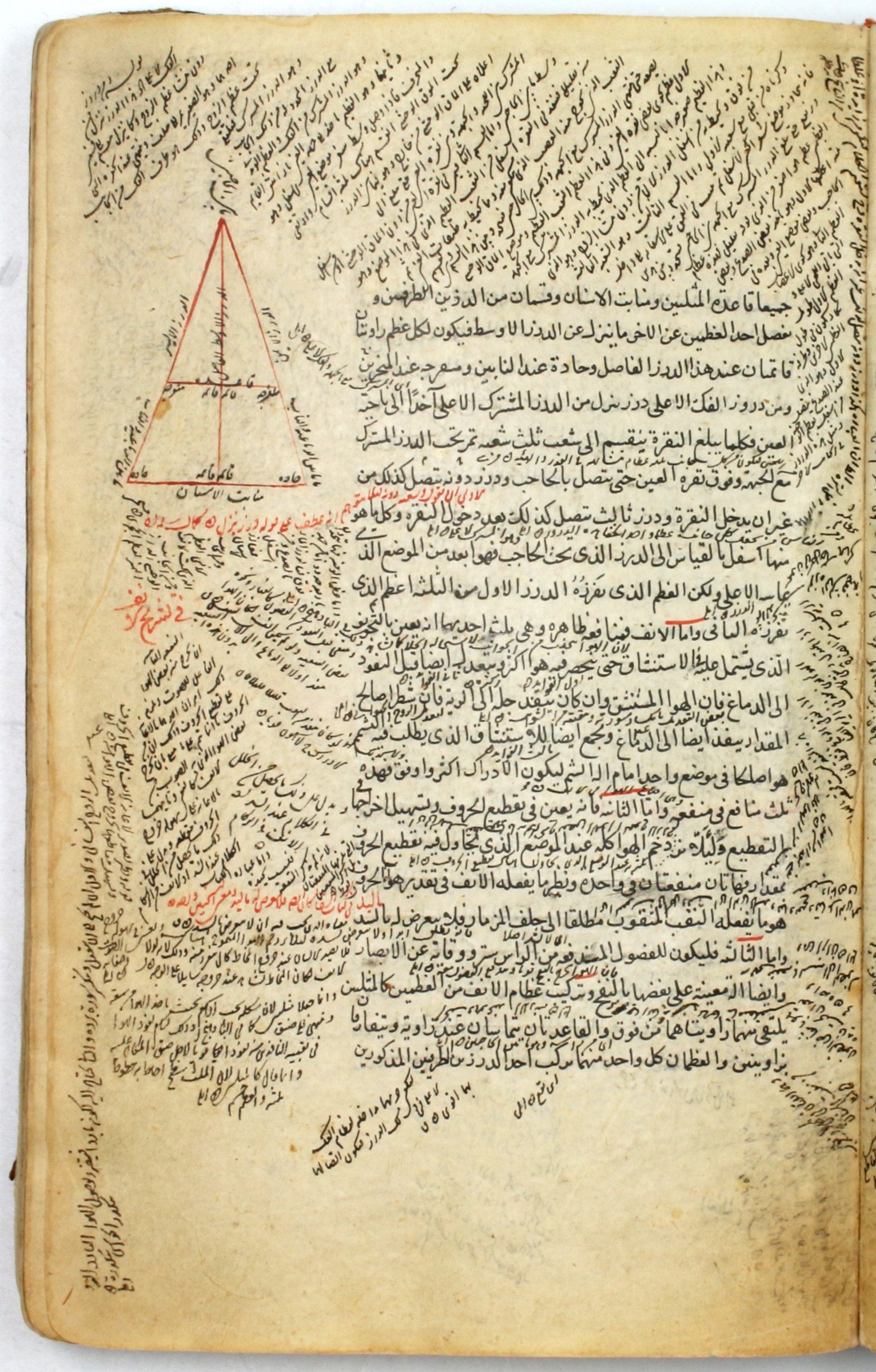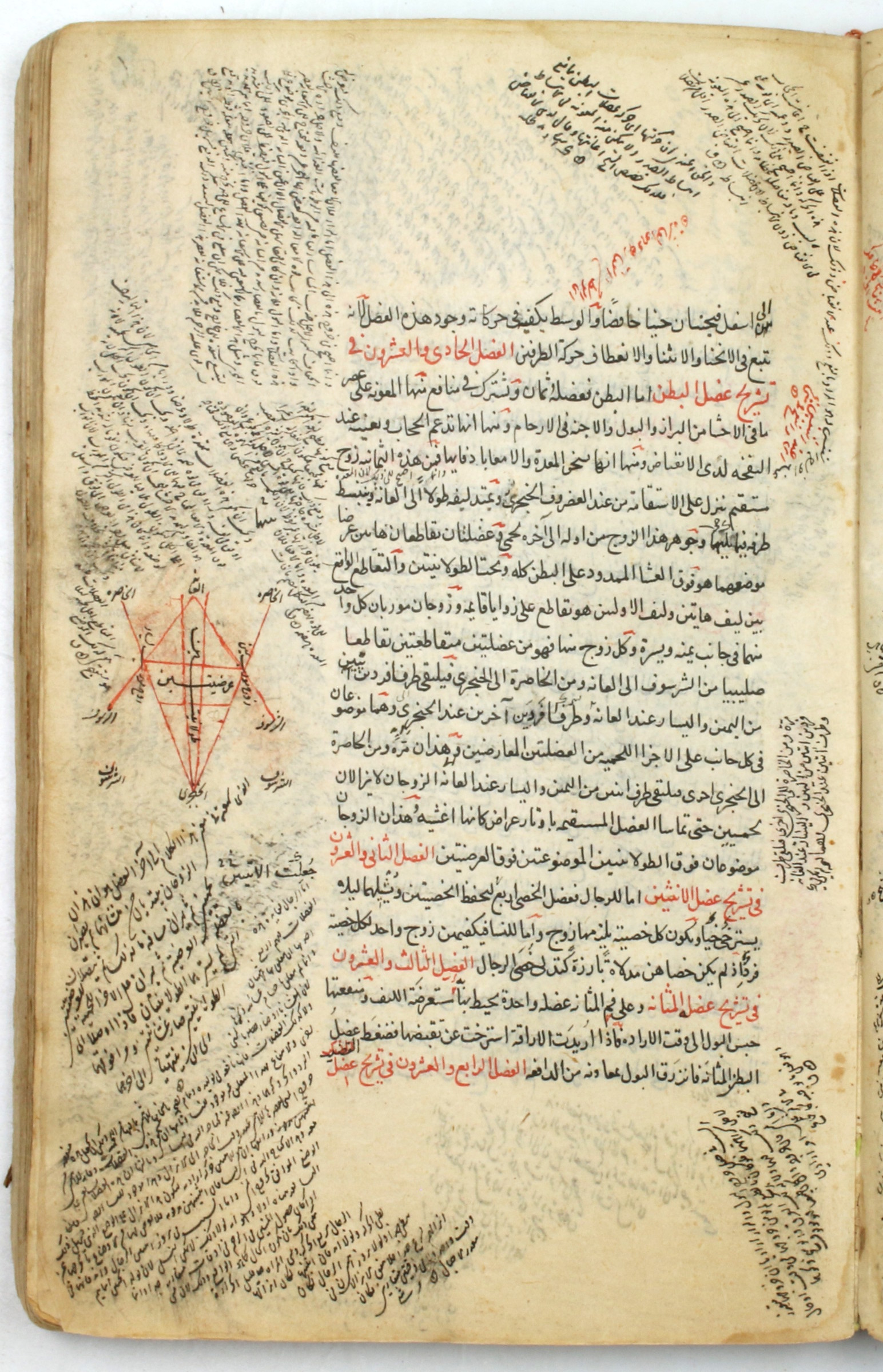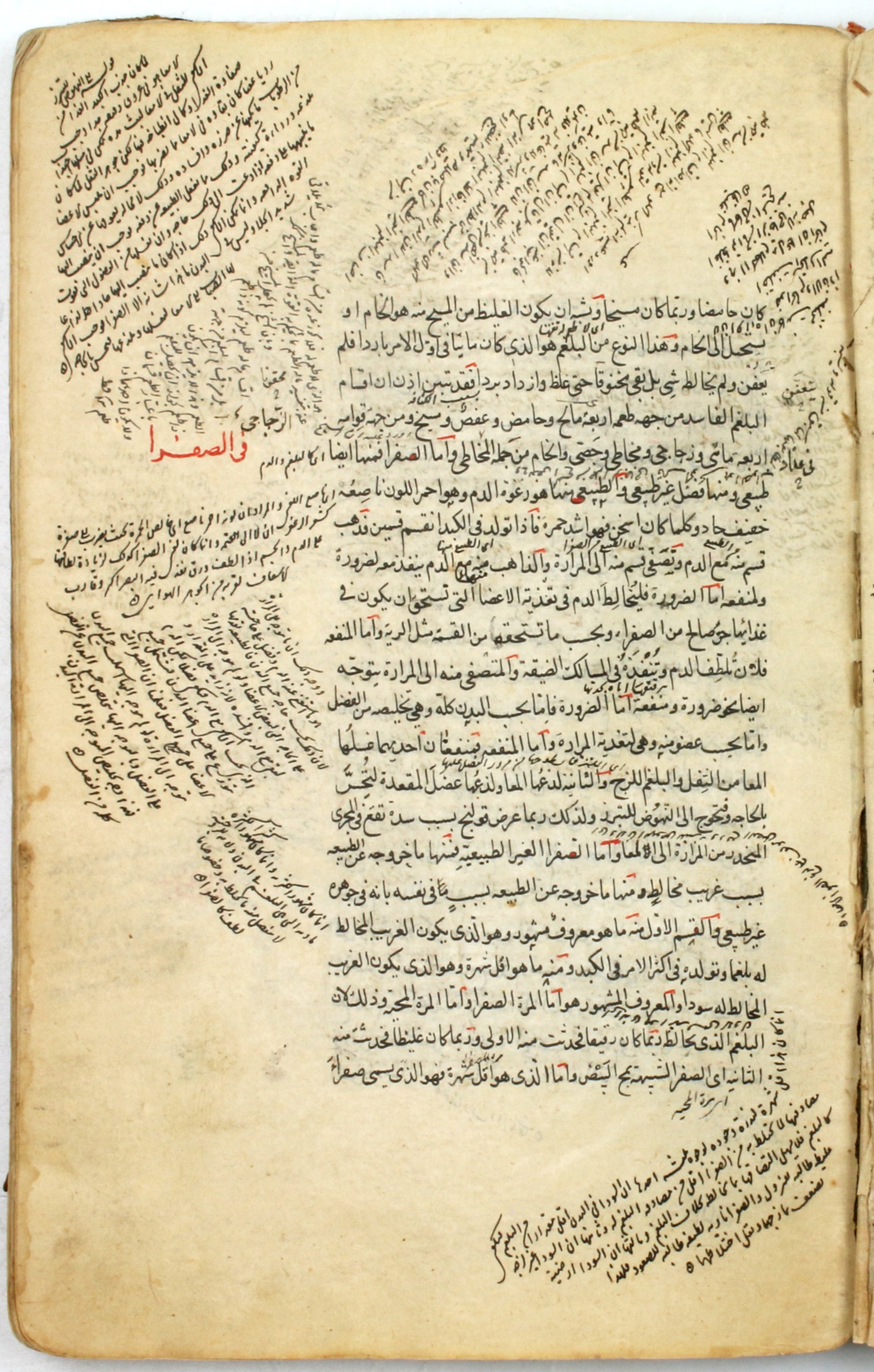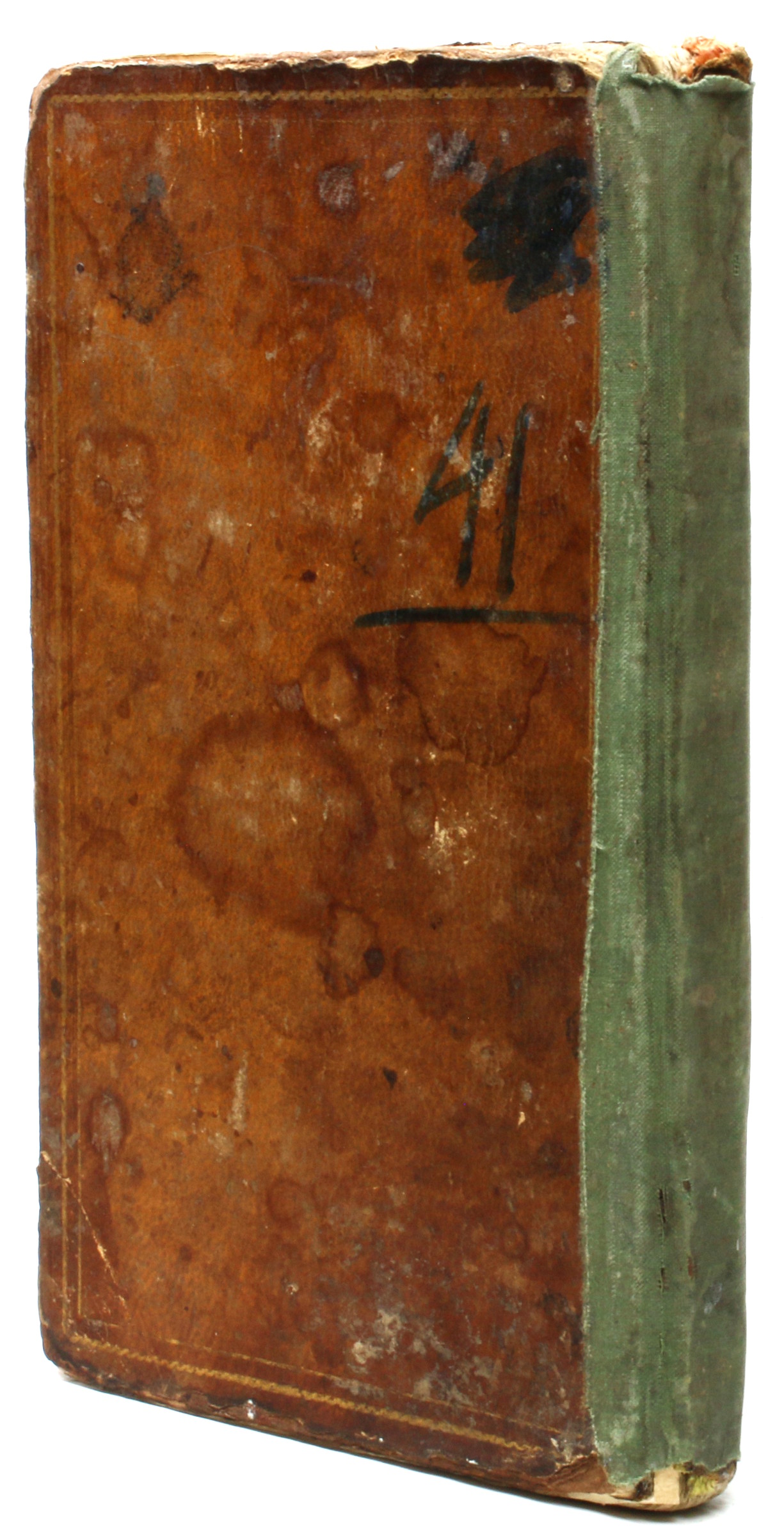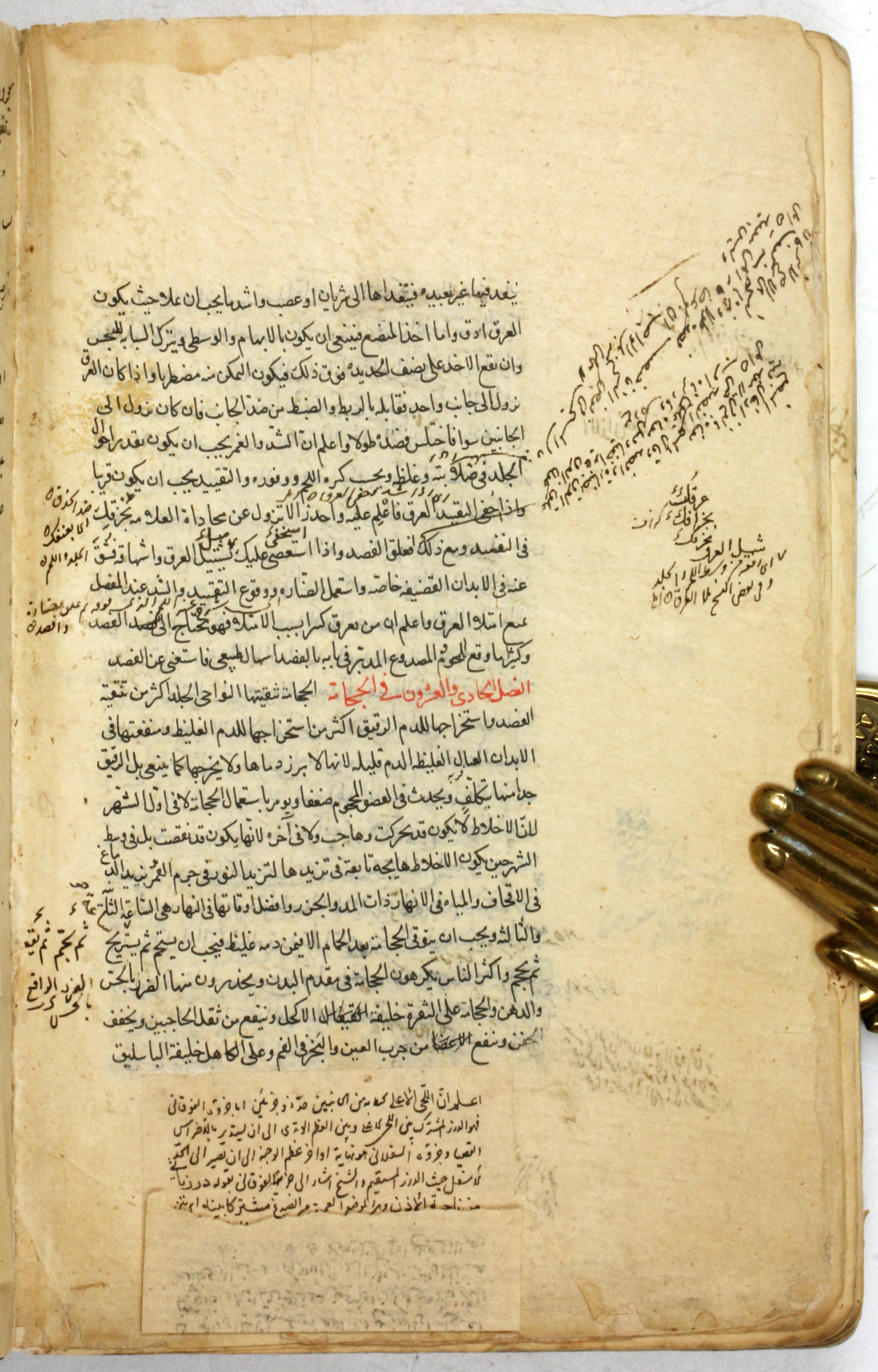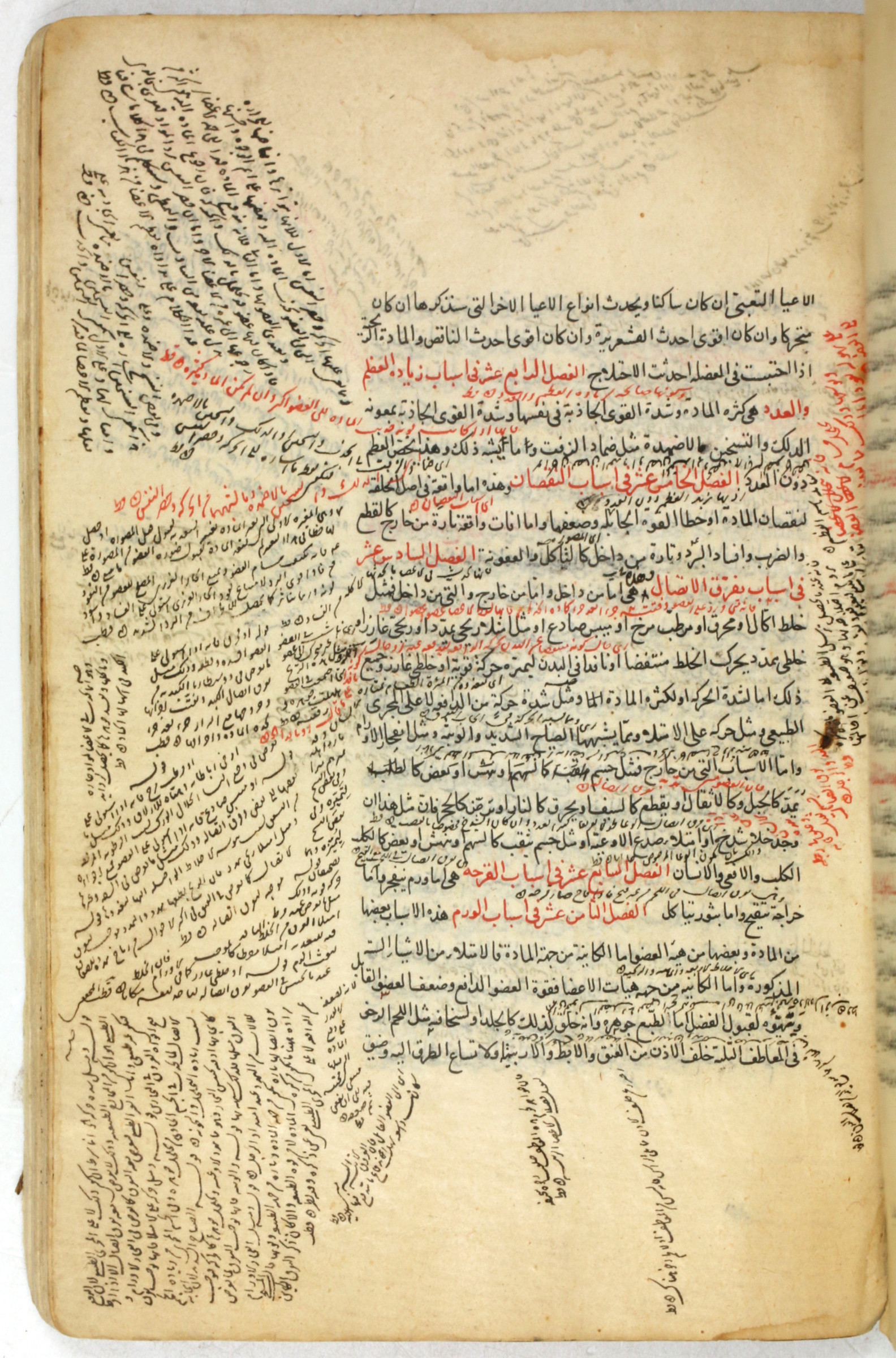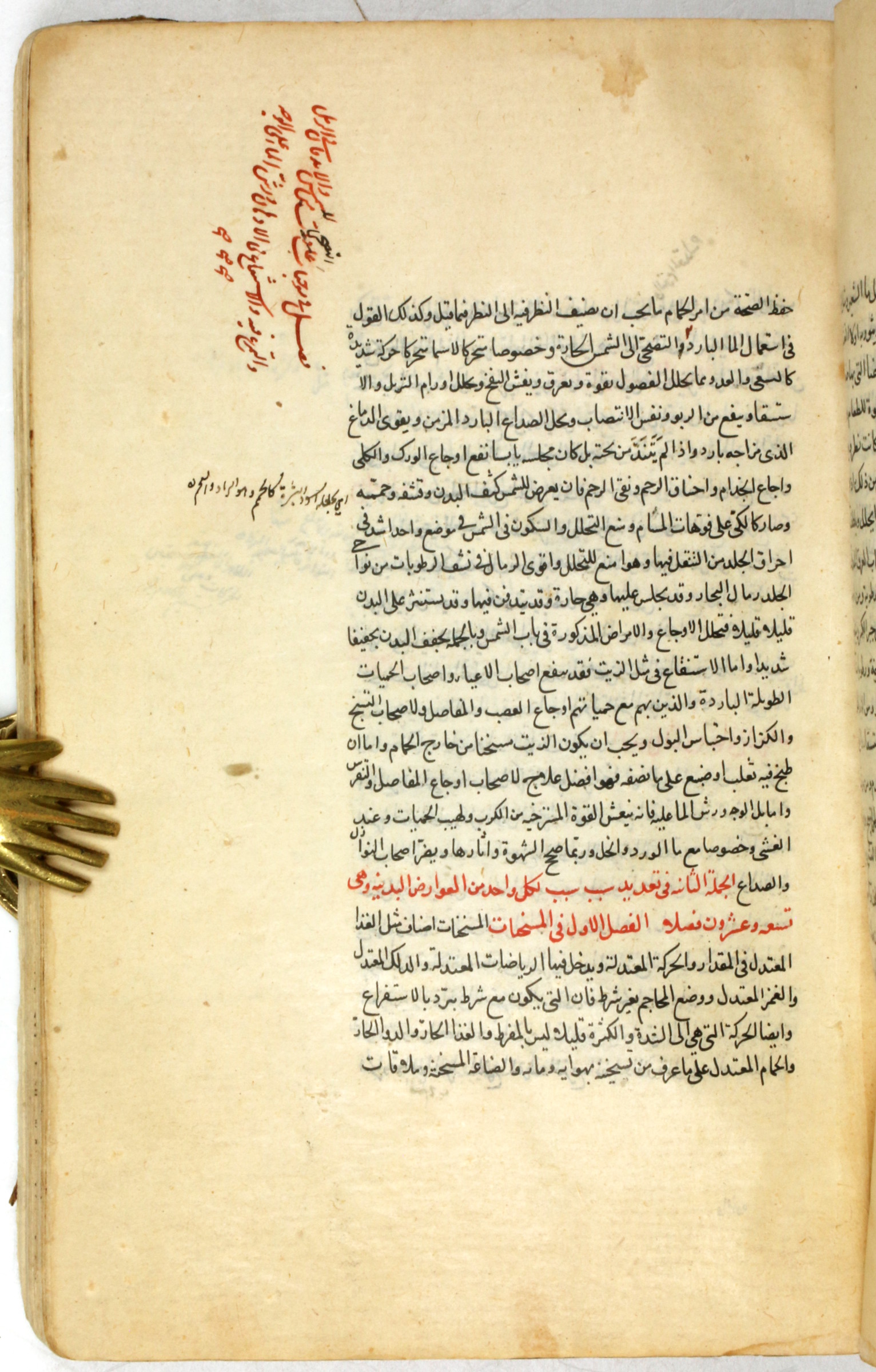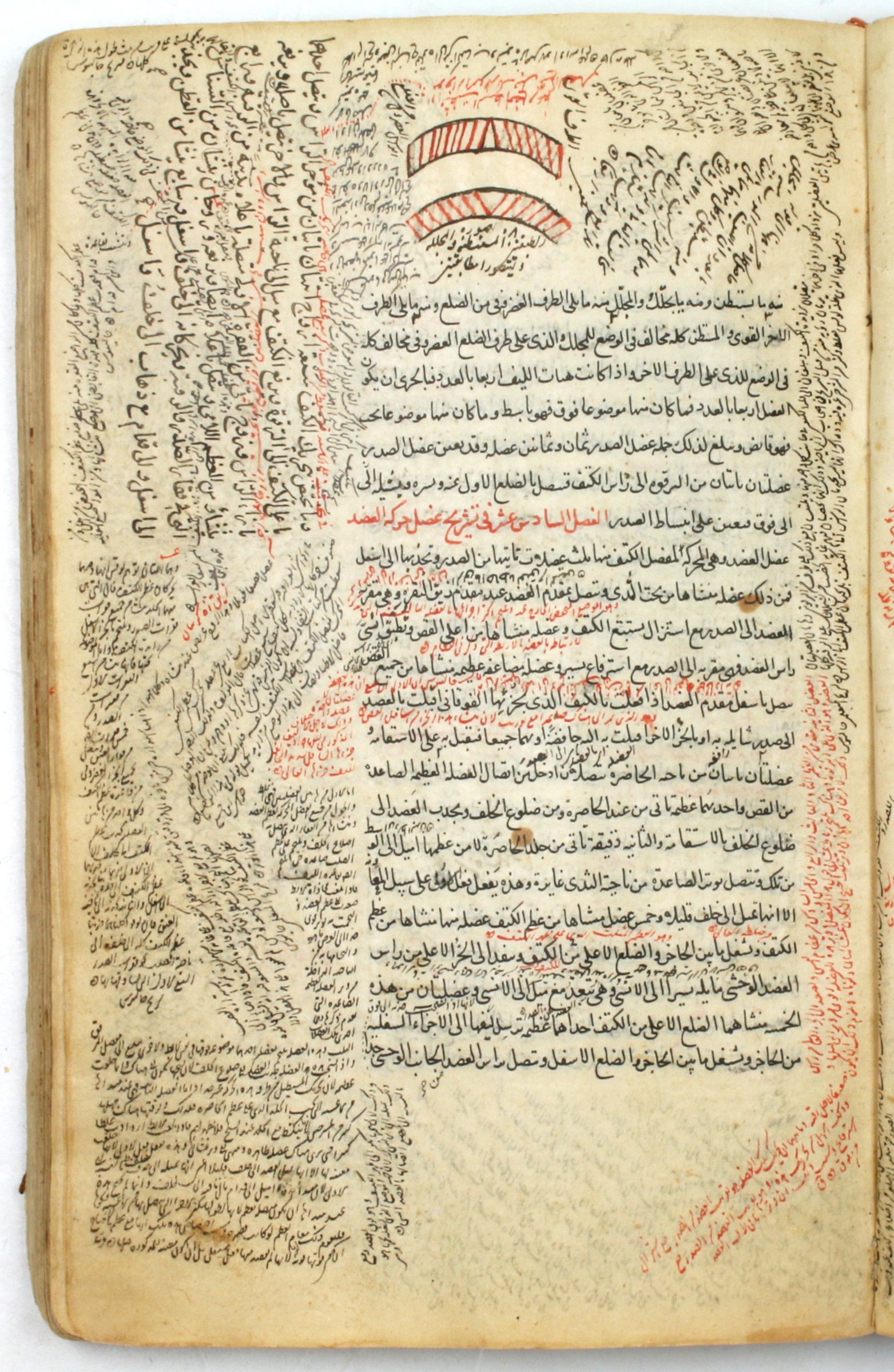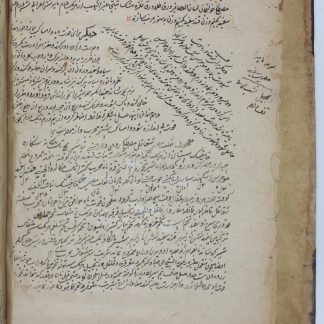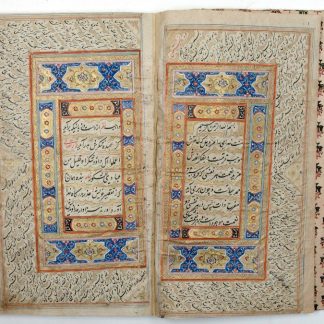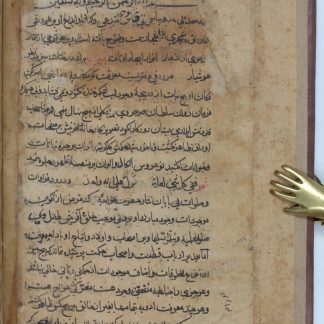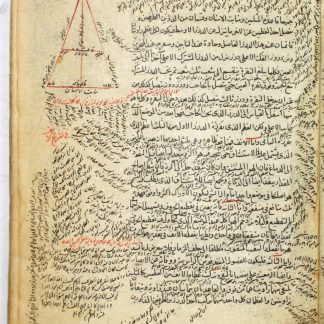The greatest work of Islamic medicine
Al-Kulliyat.
8vo (120 x 187 mm). 166 ff. Arabic manuscript on paper. Black naskh script with important words and phrases picked out in red. With occasional diagrams in the margins, as well as marginal commentary. 18th or early 19th century full leather, ruled in gilt.
€ 25,000.00
An early manuscript of al-Kulliyat, the first volume of Ibn Sina's greatest work, and perhaps the most important medical text of the Middle Ages.
Ibn Sina's "Kitab al-Qanun fi'l-Tibb" ("Canon of Medicine"), a collection of five books hailed as "the most famous medical text ever written" (Garrison/M. 43), was widely translated throughout the Middle Ages and formed the basis of medical training in the West as late as the mid-17th century. Completed in 1025 CE, this first and most important book, al-Kulliyat, concerns the general medical principles on which all later work was based. It often circulated separately from the rest of the Canon, and formed the bedrock of Ibn Sina's medical knowledge, approach, and philosophy, to be passed down to students for more than six centuries.
Ibn Sina (ca. 980-1037 CE), known in the Western tradition as Avicenna, was physician to the ruling caliphs of his time. The influence of his Canon, still being actively taught in 17th century Europe, can hardly be overstated, and the reach of al-Kulliyat in particular was immense, from Iran to Ireland. Translated into Latin in the 12th century, it played a role in spurring on the European 12th Century Renaissance and became a standard textbook of Galenic medicine.
Christie's, 11 April 2014, lot 283.
Wanting roughly five leaves at the end of the work, comprising the final 11 very short chapters.
Spine reinforced with cloth ca. 19th century. Very faint marginal dampstain; quite well preserved.
GAL I, 457. Garrison/Morton 5336.1.

